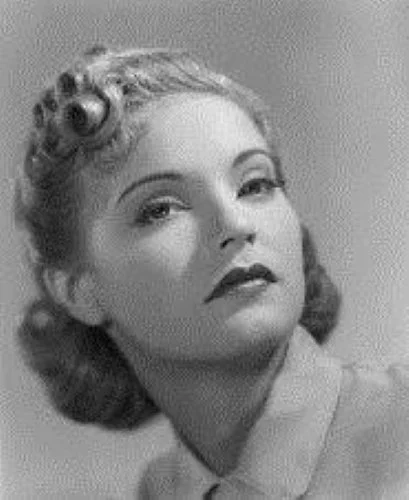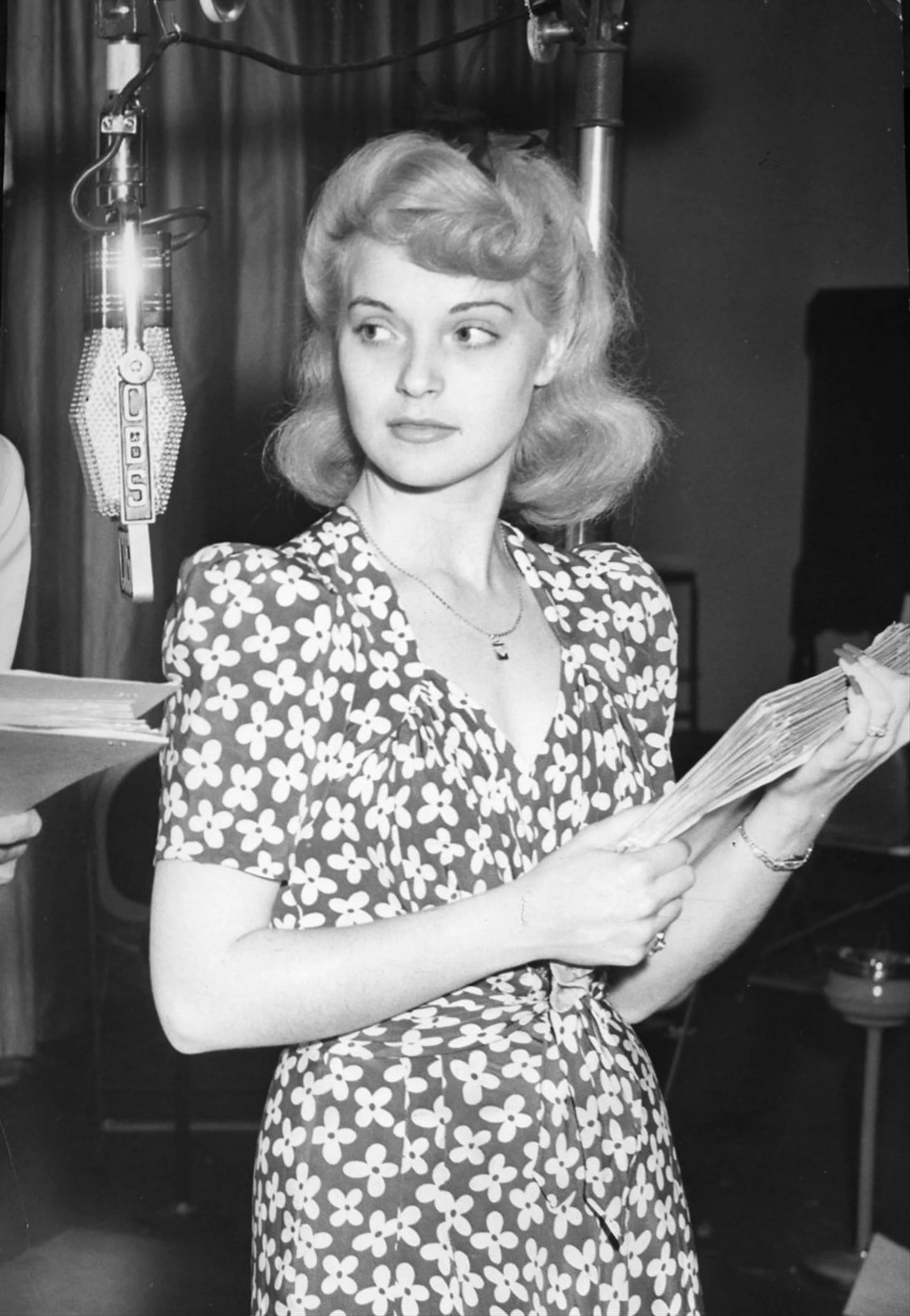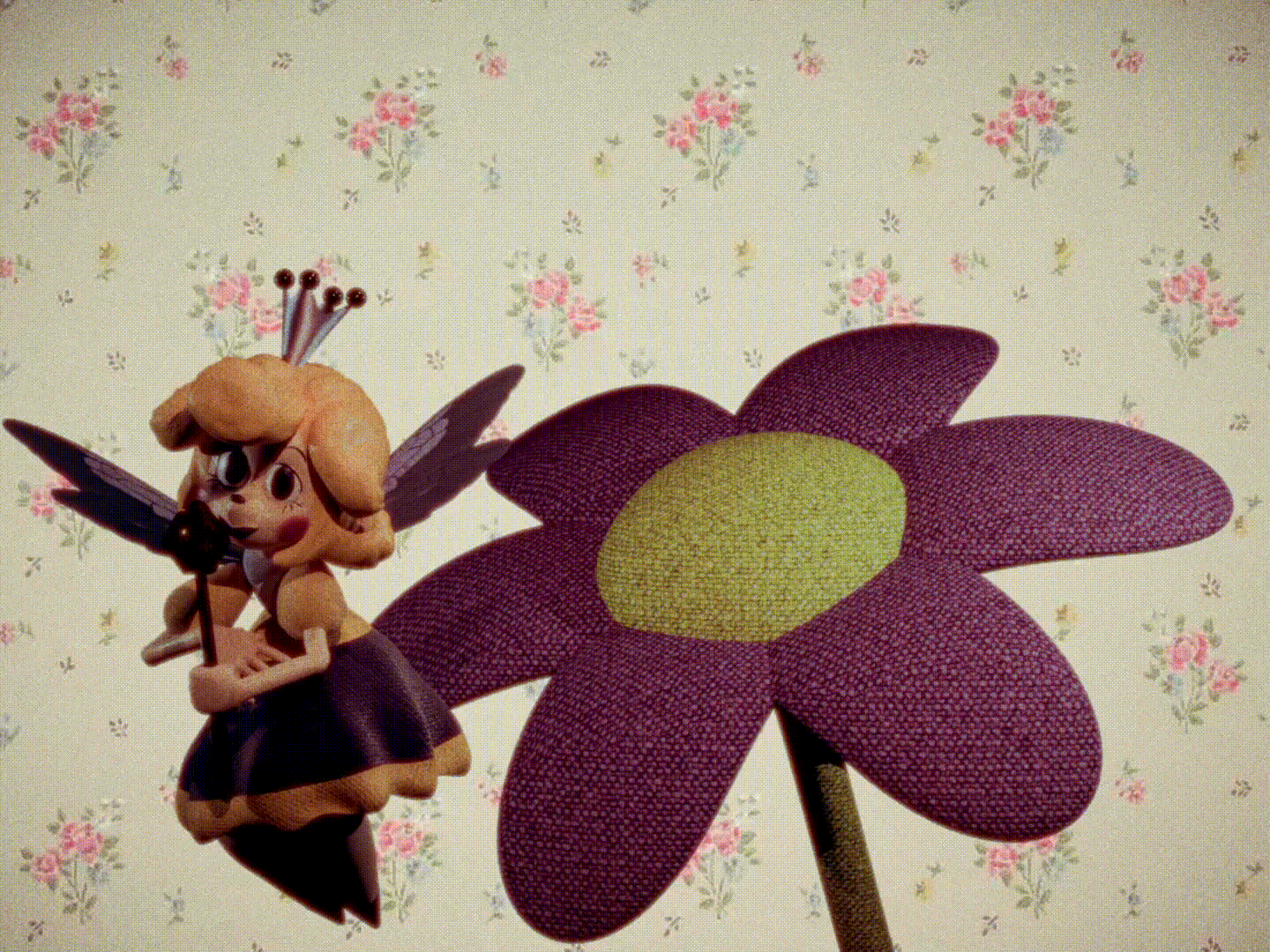Marina Gossamer
Photo of Marina Gossamer, a woman with blonde hair styled as a side part with curled bangs. She wears lipstick and has a very blank thoughtful expression.
Singer, actress, songwriter: Marina Gossamer is perhaps one of the now lesser known Hollywood stars of the 1950’s. Although many of the details of her life are obfuscated behind a reclusive personality, I was able to gather enough information to put together this article dedicated to the only named voice actor in Beetrice B.E’s history. Please note that this has been compiled with very sparse information, some of which is not entirely reliable. Of course I will be sure to clarify when the truth blurs into speculation!
The earliest available information about Marina’s life tells us the following: Starting her career in 1946, Marina Gossamer began as a humble stagehand, running things behind the scenes in plays such as “Few Who Know Me”, and her favorite play “The Building with a Beat”. Marina did not have many friends, she tended to isolate from the rest of her peers which made her incredibly difficult to work with on productions. She would often avoid or flat out refuse to participate in post production parties, instead staying after hours to clean up the sets. Additionally, (and this is from the tabloids so please take it with a hint of caution) her crew members stated her to be extremely unemotive and stone faced. “I didn’t think she had feelings at all, she never showed them,” one crew member reportedly told the magazine, “She had the face of a dead fish, and she had the personality of one too.” It is surprising then, that this woman would soon rocket into the attention of the public through less than desirable means.
A painted poster featuring Marina Gossamer. The poster is damaged and torn, the text unable to be read.
While working on a production of “I Hear It Too” Marina would catch the eye of movie producer Gerry Snatch, who had been seated in the audience. He liked her face, liked her hair, liked her eyes, and thought that she had the perfect face for acting. He was reported by Marina’s coworkers as cornering her after the production. Although the exact details of their conversation are not known, what we do know is they went home together, and soon after Marina was being introduced to the set of his latest production ”The Undercomb” the next week. I feel the need to point out that Marina was only 18 at the time while Gerry was 67 years old.
One might think this was setting Marina up for disaster, flinging her into the world of acting with assumedly no training. On the contrary, as the soon-to-be star proved herself to be a natural actress. She showed a side of herself never seen while working as a stagehand, her normally unexpressive demeanor changing to that of a sociable and charming young woman. Perhaps the pressures of the future she wanted forced her shell to crack, so to speak, showing the true person hidden inside. Regardless, Marina instantly charmed her benefactors, fellow producers, the cast and crew of the production, and perhaps most importantly the audiences of the film. In fact when test audiences were questioned about their favorite aspects of the film they unanimously reported Marina as being the best part.
Marina would be brought back on for another of Gerry Snatch’s productions, this time as the lead star a month following the success of his prior film. The production was extremely hectic, Marina even being assaulted at one point by a jealous co-star. It was not an easy life, but regardless the film “Always Ended This Way” released to critical acclaim. Audiences were enamored with the young actress, and soon she was on late night shows, advertisements, radio spots, everyone trying to get a moment of her time.
It is not known much about what Marina’s personal life was like. Even after her newfound fame she never moved from the small home she inherited from her mother, nor did she leave the house except for work. What we do know from her few interviews is that she had a passion for one particular play, one she reportedly had pestered Gerry to make for three years before he relented and began production. It was a theatrical adaptation of the play “The Building with a Beat.”
Not much is documented about the production, except that during it Marina took a very hands on approach, almost becoming a second director in her own right. She would correct people’s performances, hassle the director about his decisions, and several people even quit due to her overbearing nature. After several years of tumultuous production the film was finally released. It was arguably the crescendo of Marina’s career, and watching it you can really feel her sewing every part of her talent and skill into this movie. In fact this film, although very hard to find today, was incredibly popular when released.
Marina Gossamer in the recording booth holding her script and looking towards the studio microphone. She wears a short sleeved flower patterned dress and has a slight smile on her face.
After this Marina would withdraw from public life, only participating in small productions and advertisements as background roles. Seemingly she had grown tired of stardom and became something of a recluse, often staying inside for days on end. This was of course until the year of 1958, when Bartlebee Brands announced their overhaul of the Beetrice B.E character and began holding auditions for the role.
Now, and I have withheld this information until now, Marina had long been curious with animation, specifically animation voice acting. According to what few acquaintances she had made during her acting years, she saw it as an exciting opportunity to do something new with herself, perhaps a way to break out of the image she felt people had made of her (it is not stated what she felt this image was). She privately complained to her coworkers that animation was something her benefactor Gerry constantly persuaded and downright discouraged her away from. He told her that it was a childish profession and industry, that it would ruin both her career and public image to be caught dead voice acting for animated cartoons.
Perhaps Marina felt like this was the time to take a risk, maybe she felt that this opportunity was so prestigious she couldn’t let it slip away. Regardless, the very first day of auditions she strolled into the studio, her arrival causing a commotion outside and within the building as people scrambled to take photos, get autographs, and make way for her. Indeed the studio was so out of the way from where Marina lived that her sudden appearance was a shock to everyone. She was of course instantly chosen for the role, much to the jealousy of many individuals who would complain to the tabloids later in life. Maybe it is a little unfair, how she was given this role. However the decision was made and thus Marina Gossamer became perhaps the most notable and well known voice of Beetrice B.E.
Making her debut as the voice of Beetrice in the summer of 1958, Marina actively discouraged Bartlebee Brands and Sixer Studios from making her name the priority of the marketing. This was naturally ignored, and for the next six years of animations, radio ads, and short films that followed the face of Marina would basically become a part of Bartlebee Brands identity, as well as the identity of Beetrice. During this time Marina would become extremely involved in the role, much the same way she had acted on the set of “The House with a Beat”. The actress often corrected the writers on their portrayal of Beetrice, simply stating "That's not Beetrice, you’ve written some other character by accident” or “Beetrice would never use that wording”. In 1963 Marina once again voiced the character in Jarble Marbles stop motion film "Beetrice's Sugar Spectrum”.
Beetrices Sugar Spectrum (1963)
An animated gif in which a stop motion figurine of Beetrice twirls around before landing and sitting on a flower.
An animated gif in which the stop motion Beetrice model gestures to the audience and playfully bobs around in the air.
From here, we don’t know much else. Like I said at the beginning of the article, this was put together with sparse information, and we firmly enter the area of speculation and mystery from here on out.
The month following the stop motion films release, Marina Gossamer could not be found anywhere. Her home was left empty and undisturbed, as she had very few acquaintances. There is not much on what ultimately happened to her, and the most I can find is a tabloid article claiming she might have eloped with a lover. Oddly none of the major news outlets of the time reported on her disappearance. It’s extremely bizarre and sad that this is how we conclude this article on such an interesting woman. In the current day there aren’t many surviving movies in which she starred, she’s hardly referenced in most books on actors of the time and it is extremely confusing, because if you look at books and articles from that time period she was undeniably important and well regarded in the field of acting.
So what happened? Well, this isn’t an uncommon occurrence on our website I’m afraid. Oftentimes you’ll be researching a property or franchise that was once so monumental, so famous, so absolutely integral to the people of the time period it existed in, only for it to go unpreserved and neglected by the people that followed after, eventually becoming a ghost of a memory. Almost as if history itself has eaten them up, these places, characters, companies, they fall away because people assumed they’d last forever and didn’t bother to document them. In this case it seems like it happened to an actual person.





